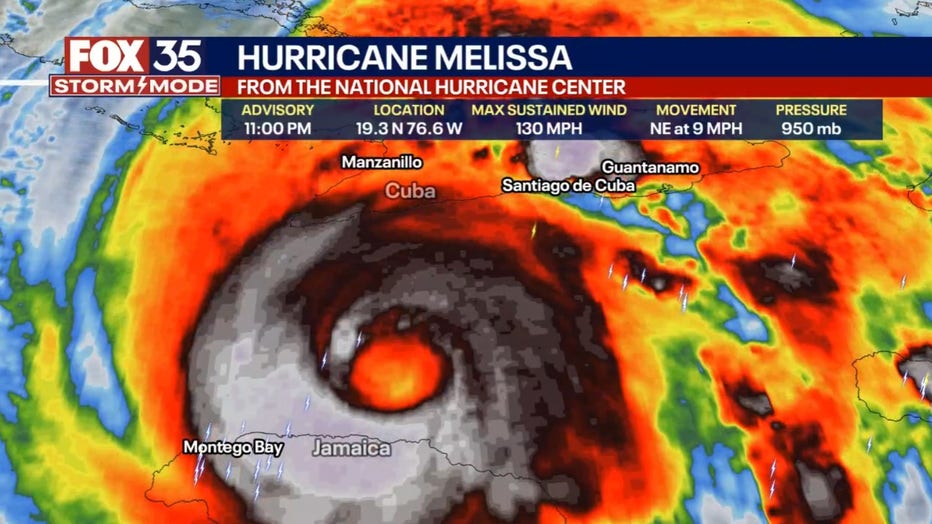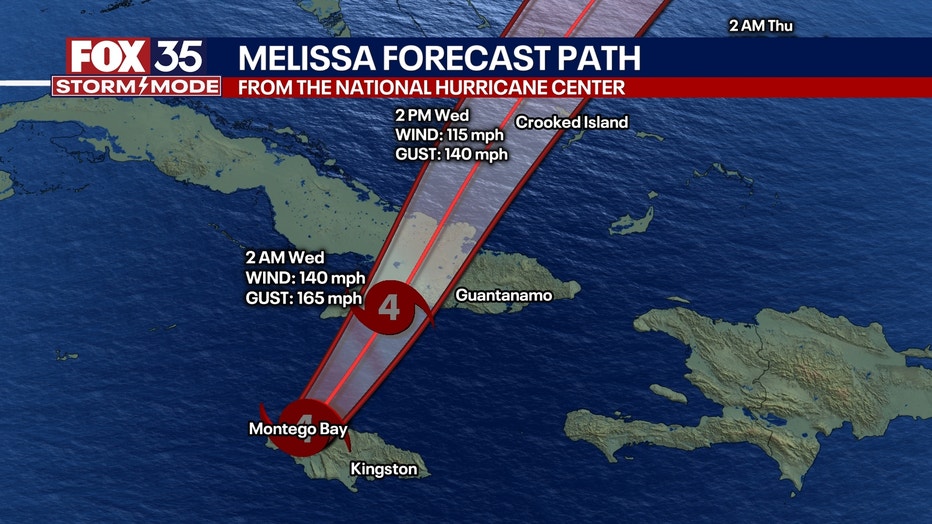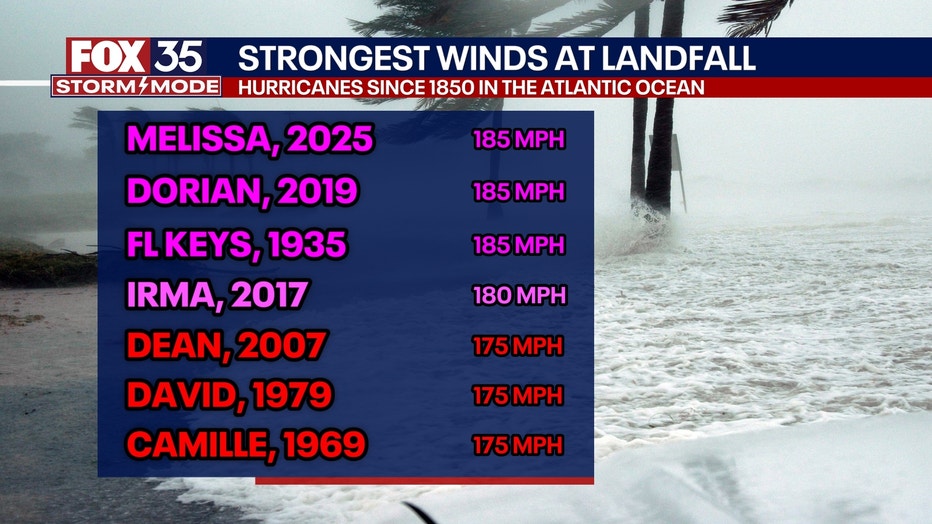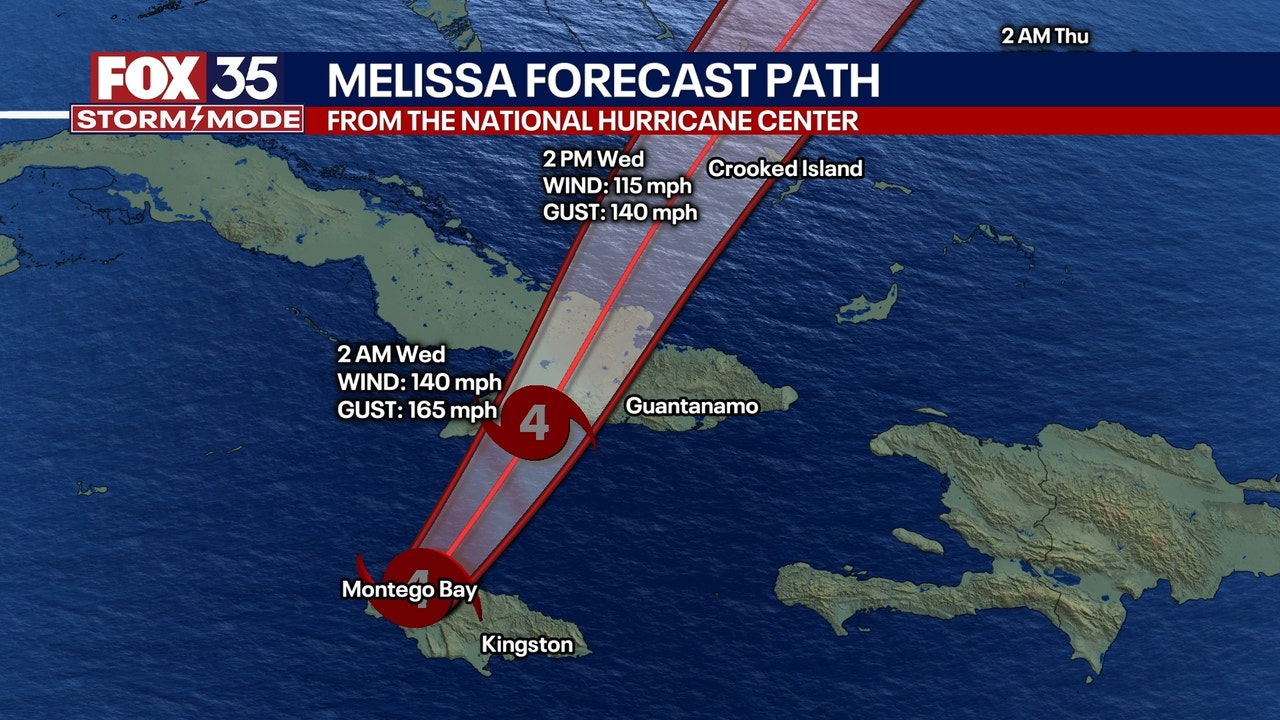ORLANDO, Fla. – Hurricane Melissa strengthened back into a Category 4 storm as it moved over the waters of the Caribbean late Tuesday evening.
It made its catastrophic landfall along the southwestern coast of Jamaica earlier in the day as a historic Category 5 hurricane.
Where is Hurricane Melissa?
The center of Hurricane Melissa was about 110 miles southwest of Guantánamo, Cuba, and 380 miles south of the Central Bahamas, the National Hurricane Center (NHC) said.
Melissa was moving toward the north-northeast near 9 mph. Maximum sustained winds were near 130 mph with higher gusts, and the estimated minimum central pressure based on data from a NOAA Hurricane Hunter aircraft was 950 mb.

Forecasters said strengthening was possible before it makes a second landfall on Cuba early Wednesday morning.
 Historic storm hits Jamaica
Historic storm hits Jamaica
Landslides, fallen trees and numerous power outages were reported as Melissa hit with 185 mph winds near New Hope around 1 p.m., with officials cautioning that the cleanup and damage assessment could be slow.
The NHC described Melissa as, “One of the most powerful hurricane landfalls on record in the Atlantic Basin.”
In terms of records, the atmospheric pressure (also known as air pressure or barometric pressure) of Hurricane Melissa at landfall was tied with the 1935 Labor Day Hurricane in the Florida Keys as the strongest storm documented since 1850 — at 892 millibars (mb). This is a measurement of the weight of the air in the atmosphere that is pushing down on a specific point on the planet’s surface.

Melissa also had some of the strongest winds at landfall, at 185 mph, tying Hurricane Dorian in 2019 and the 1935 Labor Day Hurricane.
 ‘Catastrophic’ destruction
‘Catastrophic’ destruction
The NHC has warned of catastrophic winds, flash flooding, storm surge, and landslides in Jamaica, Cuba and Hispaniola as Hurricane Melissa passes over the region.
A turn toward the northeast is expected later this evening, and a faster motion in that direction is expected on Wednesday and Thursday.
The core of Melissa is expected to move over Eastern Cuba early Wednesday morning, move across the southeastern or central Bahamas later on Wednesday, and approach Bermuda Thursday and Thursday night.

Melissa is expected to remain a powerful hurricane when it moves across Cuba, the Bahamas, and near Bermuda. Hurricane-force winds extend outward up to 30 miles from the center and tropical-storm-force winds extend outward up to 195 miles.
Hurricane Hunters need to inspect plane after Melissa turbulence
The Hurricane Hunters flew into Hurricane Melissa on Monday and Tuesday – and both times, had to turn back due to strong turbulence.
On Tuesday, the Hurricane Hunters said its TEAL 75 team, also known as the Air Force Reserve Hurricane Hunters, returned to Curaçao after “encountering heavy turbulence…while entering the eye of Hurricane Melissa.”
“During the event, the aircraft briefly experienced forces stronger than normal due to turbulence,” a statement read.
“While this does not automatically indicate damage, standard safety procedures require an inspection before turning to operations.”
Melissa is 13th storm of season
Melissa is the 13th named storm in the Atlantic Basin for the 2025 season and only the fifth to reach hurricane status; however, four of those hurricanes were Category 4 or greater.

The Source: The information is from the National Weather Service, the Hurricane Hunters, and the FOX 35 Storm Team.

